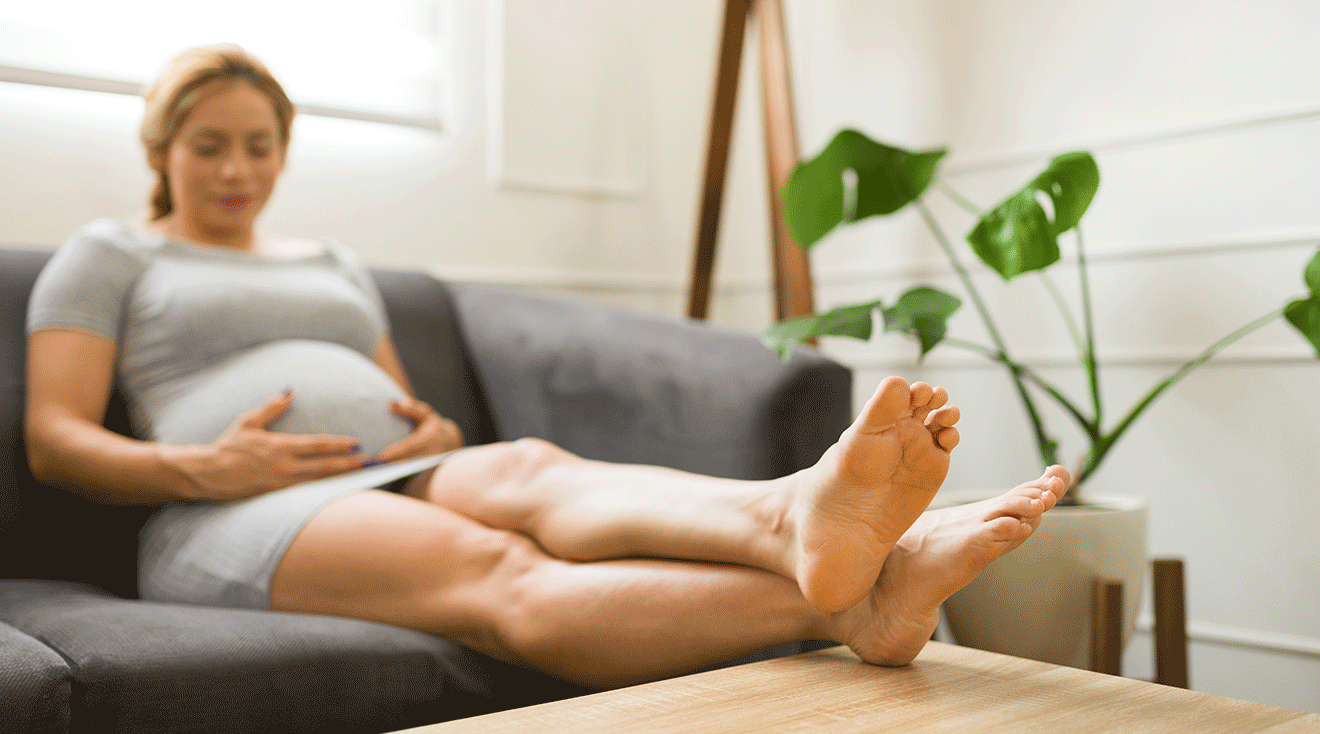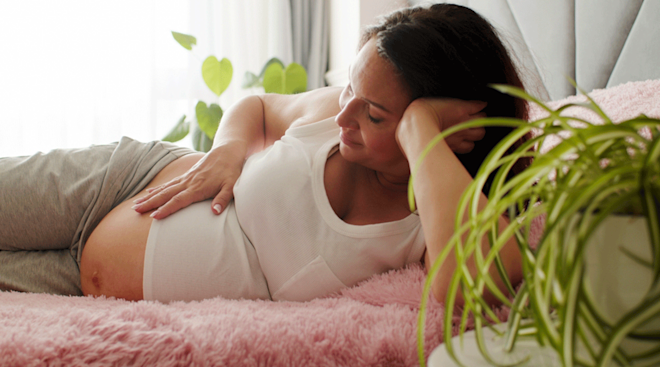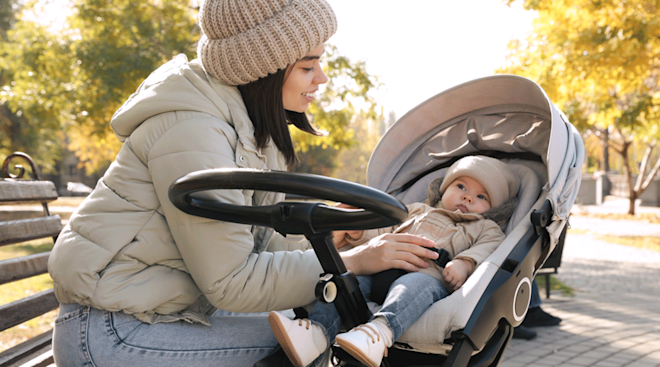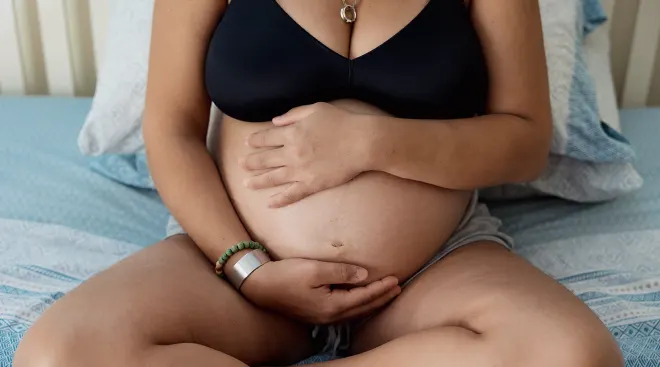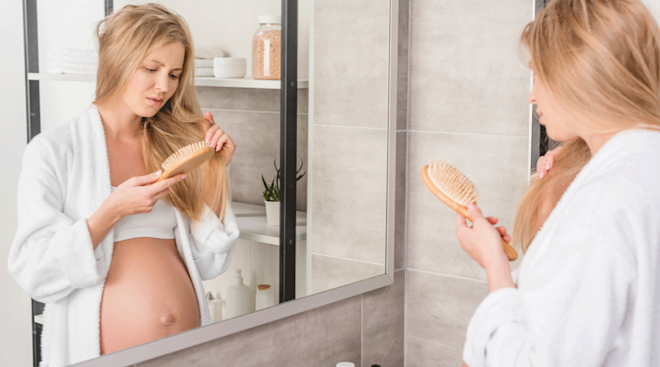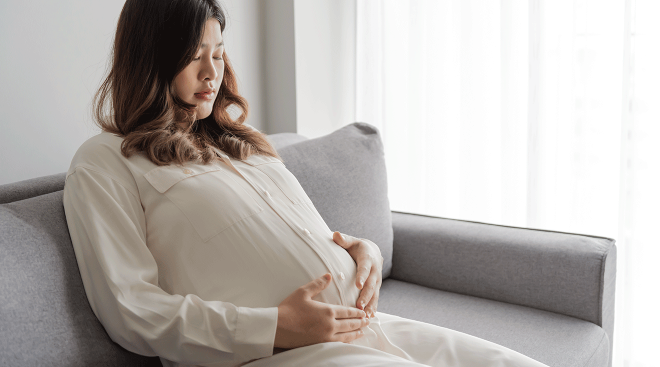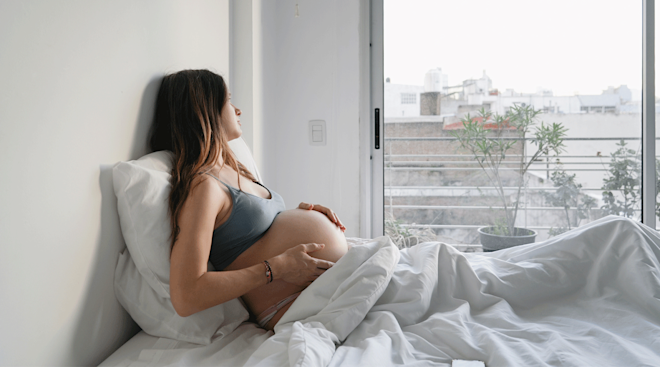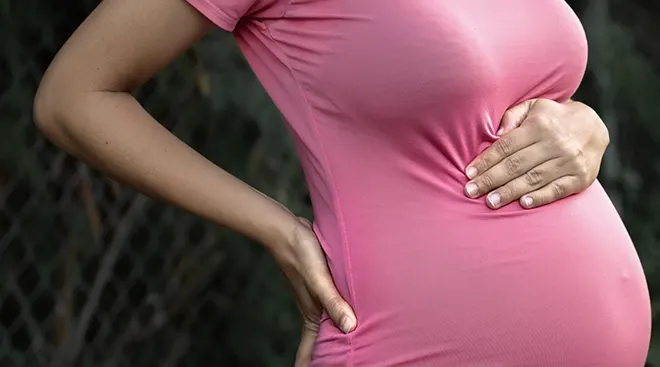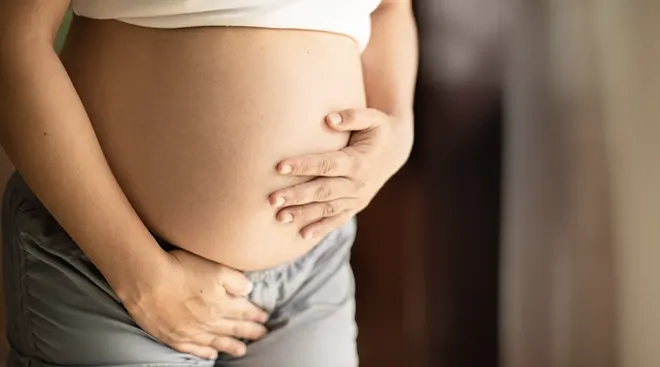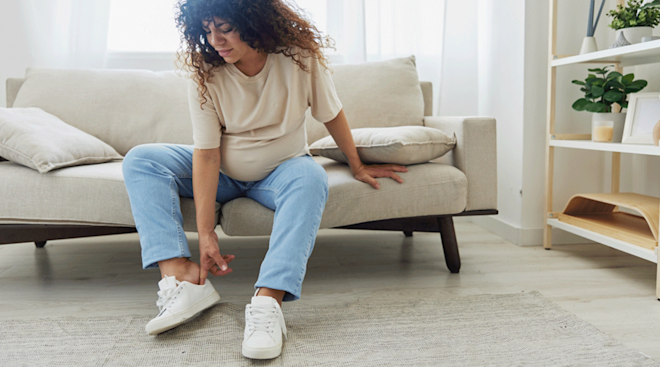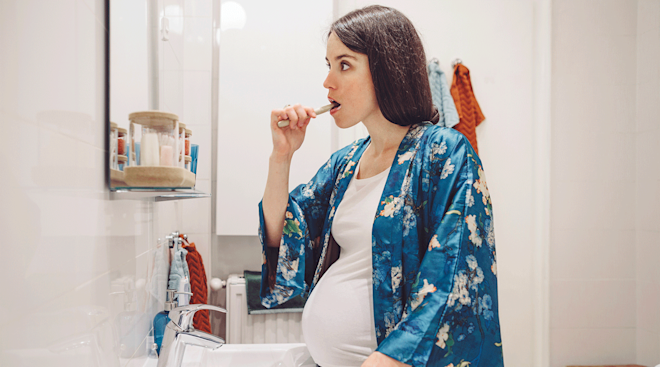How to Relieve Swollen Feet During Pregnancy
Pregnancy comes with a host of discomforts, especially as you enter your third trimester. While morning sickness may be a distant memory by now, you might be dealing with symptoms like fatigue, back pain and, of course, swollen feet and ankles.
Some research shows that as many as 80 percent of moms-to-be and pregnant people experience swollen feet during pregnancy. Here, we’ll take a look at the most common causes of feet swelling during pregnancy, how to relieve the swelling—or at least get a bit more comfortable—and when to reach out to your doctor.
Swollen feet during pregnancy can happen at any point, but they’re most common during the third trimester, says Victoria Scott, MD, a urogynecologist with Cedars-Sinai Medical Center in Los Angeles and co-author of A Woman’s Guide to Her Pelvic Floor: What the F@# Is Going On Down There?* And don’t be surprised if the swelling isn’t limited to your feet: It’s normal for your hands, ankles and even legs to swell too.
Thankfully, having swollen feet while pregnant is completely normal, experts say. “During the third trimester, your growing uterus puts pressure on the blood vessels in the pelvis and legs, which reduces circulation and leads to fluid retention in your legs and feet,” says Scott.
Along with this, your pregnant body is busy pumping out much more blood than usual in order to support your growing baby’s needs, which can contribute to swelling, Scott adds. Coupled with surging pregnancy hormones, you’ve got a recipe for pregnant swollen feet.
If you’re dealing with your ankles and feet swelling during pregnancy, you’re likely ready for some sweet relief. Have no fear—there are lots of home remedies for swollen feet during pregnancy. Here are a few tips the experts recommend.
Elevate your feet
One of the best ways to relieve swollen feet during pregnancy is simply to elevate your feet. “By bringing your feet and calves up, you’re encouraging [excess] fluid, through gravity, to go back into regular circulation,” says Catherine Amble, MD, an ob-gyn at Community Health of South Florida. If you work at a desk, try to elevate your feet regularly throughout the day to decrease the swelling.
Wear compression socks
Compression socks can help push fluid out of your legs and into the trunk of your body through gentle pressure, says Amble.
Drink plenty of water
Ever since you got pregnant, your healthcare providers—and well-meaning friends and family members—have likely advised you to stay hydrated, and for good reason. “It’s recommended that women should consume about 80 ounces of water per day during pregnancy, because your body’s creating more blood volume and requiring more fluid as a result,” Amble says. “Staying hydrated encourages your kidneys to filter out any extra fluid … [and] helps the body maintain the normal volume of fluid in circulation.”
Reduce salt intake
“Salt, in general, is important during pregnancy,” says Amble. But excess sodium can contribute to swelling. “For most people, whether pregnant or not, the biggest source of sodium is processed foods, so in terms of overall health it’s important to limit processed foods and to get more nutrition from whole and unprocessed foods,” she says. Still, she recommends not going below about 2,500 to 3,000 milligrams of sodium per day during pregnancy, slightly more than the 2,300 milligrams the U.S. Food and Drug Administration recommends for nonpregnant people.
Massage your feet
Gently massaging your feet and legs can also help to reduce swollen feet in pregnancy. “I’d suggest massage happen in combination with elevating the legs,” says Amble. “Generally, what’ll help is massaging so you’re gently pushing the fluid toward the core of the body by starting from the extremities, depending on where the swelling is.”
Wear comfortable shoes
Of course, comfort’s pretty subjective when it comes to shoes. But Amble suggests following these general tips: “Make sure no part of the shoe is causing indentation or squeezing,” she says. “Many times, tight straps or shoelaces might need to be loosened. Good arch support can be helpful in reducing pain in the feet that comes with swelling, and in reducing any accompanying back pain.” She also suggests going a size up during pregnancy—even if your feet aren’t swollen, they’re likely to grow while you’re expecting.
Try light exercises
“Staying active, in general, can help quite a bit with swelling,” says Amble. She recommends exercises that can help push the fluid back toward the body: “Some women like foot exercises such as rolling the ankles and stretching out the feet and toes.”
Avoid standing in one place for long periods
If you have to stand for long periods of time, it can be helpful to move around a bit in order to reduce swollen feet during pregnancy. Periodically bend your knees, pick up your feet and kick your ankles back while bending at your leg at the knee to keep the blood circulating, Amble suggests.
Submerge your feet in cool water
Amble recommends soaking your feet in cool water for a few minutes to help with swelling.
Be sure to let your healthcare provider know if you experience sudden, rather than gradual swelling in your feet and legs, says Scott. This may happen due to elevated blood pressure, which could be a sign of preeclampsia. Also, make sure to tell your doctor immediately if the swelling’s only in one leg; this could be caused by a blood clot. “It’s the onset of sudden and/or asymmetric swelling, where one extremity is much more swollen than the opposite side, which can raise red flags … especially if there’s accompanying pain and the area is red,” Amble says.
Rest assured that in the vast majority of cases, having swollen feet during pregnancy is a completely normal—and very common—symptom. And don’t worry if the swelling temporarily gets worse after you give birth: “Swelling can get worse after delivery for most women,” says Amble. “But [it] usually starts to get better within the first week after delivery.”
Please note: The Bump and the materials and information it contains are not intended to, and do not constitute, medical or other health advice or diagnosis and should not be used as such. You should always consult with a qualified physician or health professional about your specific circumstances.
Plus, more from The Bump:
Catherine Amble, MD, is an ob-gyn at Community Health of South Florida. She received her medical degree from the David Geffen School of Medicine at the University of California, Los Angeles.
Victoria Scott, MD, is a urogynecologist with Cedars-Sinai Medical Center in Los Angeles and the co-author of A Woman's Guide to Her Pelvic Floor: What the F@# Is Going On Down There?* She received her medical degree from the David Geffen School of Medicine at the University of California, Los Angeles.
Midwifery and Nursing Research, Influence of Foot Massage and Soak Warm Water Feet Against the Edema of Trimester III Pregnant’s Woman Leg in Tamansari Public Health Center Tasikmalaya Town, April 2023
US Food and Drug Administration, Sodium in Your Diet, March 2024
Learn how we ensure the accuracy of our content through our editorial and medical review process.
Navigate forward to interact with the calendar and select a date. Press the question mark key to get the keyboard shortcuts for changing dates.
































